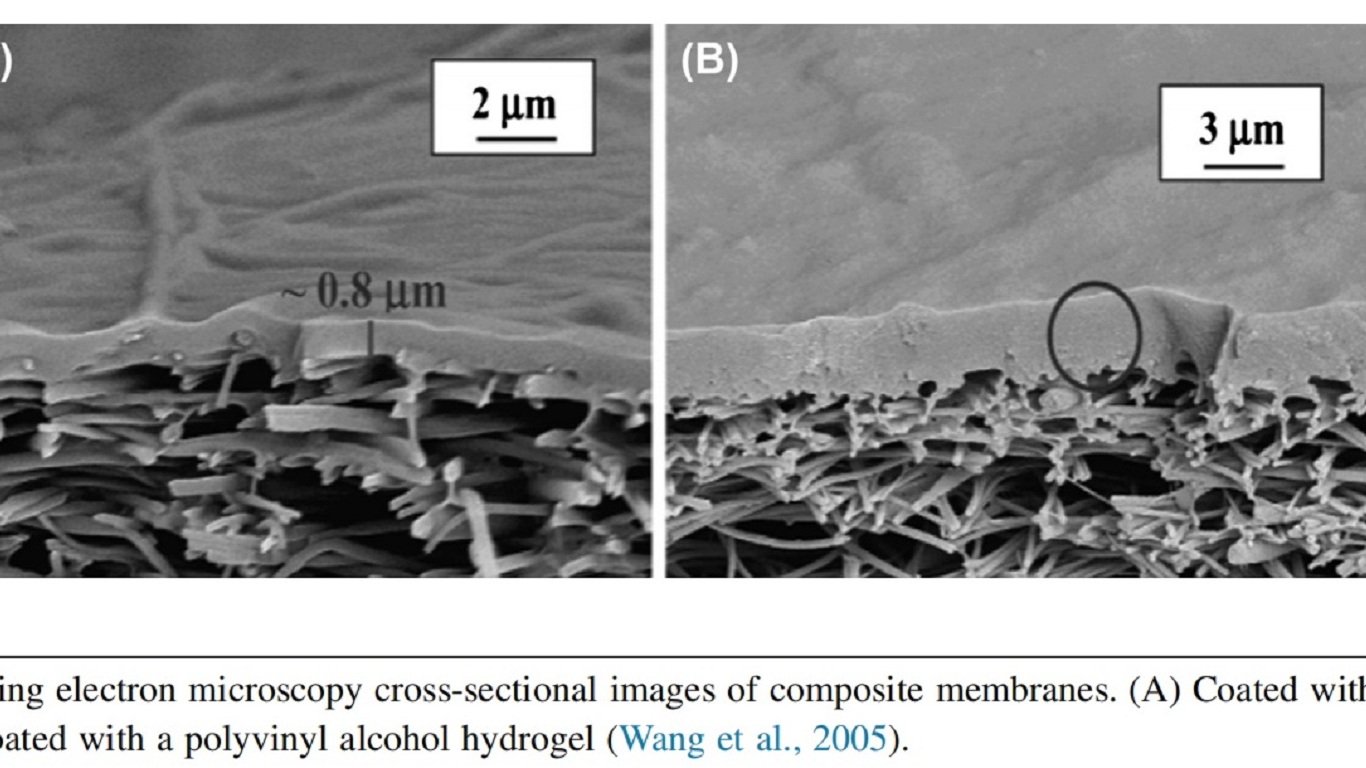Wang et al. first reported a high-flux TFNC-based UF membrane system containing a “nonporous” hydrophilic coating that was water permeable (Pebax or PVA), an electrospun nano-fibrous support, and a nonwoven microfibrous substrate (Fig. 14.9). The TFNC UF membrane was fabricated by cast coating with the separation material on the electrospun membrane. Results indicated that these unique hydrophilic TFNC membranes exhibited a very high flux (several times higher than conventional TFC-based UF membranes) and comparable high rejection ratio for oil-and-water emulsion separation. Interestingly, the permeability of TFNC UF membranes can be dramatically increased by introducing nanofillers (such as surface-oxidized multiwalled carbon nanotubes [MWCNTs] or cellulose nanofibers [CNs]) as a means to induce water channels in the barrier layer. For example, the addition of 1.3 wt% of CNs or 10 wt% of oxidized MWCNTs could increase permeability by two to three times with the similar rejection ratio of 99.8% for oil/water emulsion. Wang et al. also used electrospinning to fabricate a PVA-based substrate, followed by crosslinking to improve the structural stability and mechanical strength of the membrane. In addition, the applied fabricated membrane seems to be efficient in UF techniques because of low membrane fouling in nature. Yoon et al. demonstrated that after 24 h of operation, the permeate flux for the electrospun-based membrane remained stable, whereas a commercial UF membrane experienced severe flux decline. The success of the aforementioned TFNC UF membranes could be attributed partially to the unique characteristics of an electrospun scaffold with high porosity and interconnected pores and the utilization of a highly hydrophilic barrier layer (e.g., PVA).


